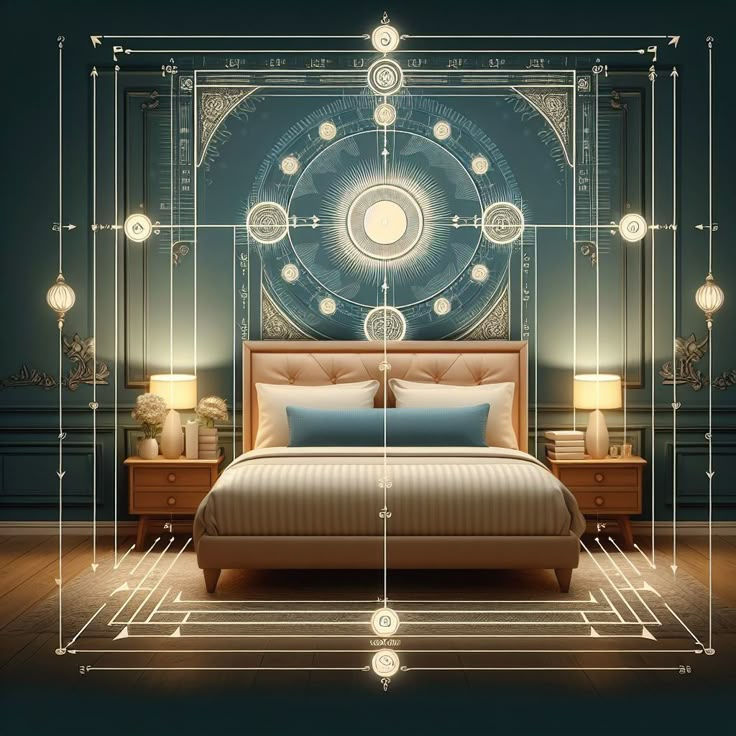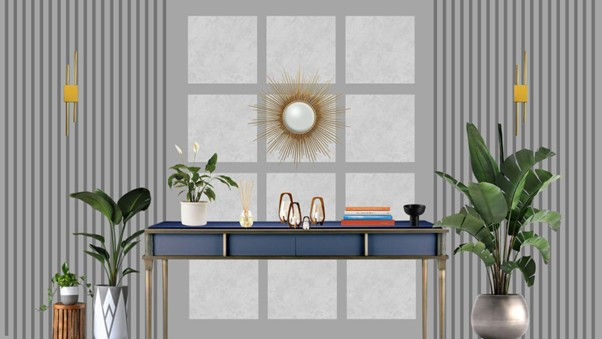Vastu & Interiors – Balancing Tradition, Design & Practicality
- Studio A
- Aug 22
- 7 min read
A Detailed Approach
Designing a home interior design is not just about looks – it’s about creating harmony and balance. Vastu Shastra, the ancient Indian science of architecture, blends beautifully with modern interiors when applied thoughtfully. It guides the placement of rooms, colors, lighting, and furniture to bring positivity and balance. At the same time, interior design focuses on comfort, functionality, and personal style. The key lies in merging tradition with today’s design needs so your home feels both aesthetically pleasing and energetically aligned. When tradition, design, and practicality come together, the result is a space that truly feels like home.

The Role of Vastu in Modern Interior Design
Vastu Shastra, an ancient science of architecture, is all about creating balance between space, energy, and nature. In home interior design, it can be adapted without disturbing aesthetics—for example, placing the bedroom interior design in the southwest for stability, keeping the kitchen interior design in the southeast for positive energy, or using calming colors in the northeast for peace. Even if layouts don’t perfectly match Vastu, small adjustments like mirrors, plants, or lighting can help. This way, homes remain stylish and functional while still aligned with traditional harmony.
Five Elements of Nature in Vastu Interiors
Vastu is deeply rooted in balancing the five natural elements—earth, water, fire, air, and space. Earth is represented by flooring, walls, and stability; water by fountains, aquariums, or storage tanks; fire by kitchen interior design, lamps, and lighting; air by proper windows and ventilation; and space by open layouts and uncluttered corners. A balanced home decorator approach uses each element thoughtfully—for example, placing water features in the northeast, fire elements in the southeast, and keeping central spaces open. Natural materials, greenery, and sunlight help maintain this balance effortlessly. By aligning interiors with the five elements, homes feel harmonious, healthy, and full of life.
Vastu for Apartments vs. Independent Homes
Applying Vastu in apartments can be challenging due to fixed layouts and shared structures, while independent homes offer more flexibility. In apartments, if the main entrance or living room interior design directions don’t align with Vastu, small remedies like using mirrors, lighting, plants, or colors can help correct imbalances. Independent homes, on the other hand, allow full alignment—from entrance direction to interior design for hall, pooja rooms, and garden planning. Apartments benefit from maximizing natural light and keeping spaces clutter-free to balance limited energy flow. Independent homes can focus on Vastu-friendly entrances, drawing room interior design ideas, and open courtyards. Both types of homes can achieve harmony by blending Vastu with contemporary interiors.
Integrating Vastu with Minimalist Interiors
Minimalist interior design ideas for living room emphasize simplicity, functionality, and openness, which align beautifully with Vastu principles. Clutter-free spaces allow energy to move freely, enhancing peace and balance. Neutral colors like white, beige, and soft pastels also support calmness and positivity as per Vastu. Natural materials like wood, stone, or linen connect the home with the five elements of nature. Furniture should be functional and thoughtfully placed, avoiding overcrowding. In Modular Interiors, every piece has a purpose, just like in Vastu where every direction has significance. Soft lighting, fresh air, and indoor plants further balance energy while keeping the design sleek. Together, minimalism and Vastu create homes that feel modern, peaceful, and spiritually aligned.
Work-Life Balance at Home with Vastu
With work-from-home becoming a part of modern life, Vastu helps in designing spaces that balance productivity with peace. The home office should ideally be in the southwest or west, which promotes stability and concentration. The desk should face north or east to encourage focus and success. Avoid working from the bedroom, as it disturbs both rest and energy flow. Separating work and leisure areas ensures mental clarity and reduces stress. Using natural light, plants, and organized layouts boosts creativity and positivity. Calming wall paint ideas like green or light blue create a refreshing atmosphere. By following these principles, you can maintain both career success and a peaceful home environment.
Ceilings & Flooring in Vastu Interiors
Ceilings and flooring play a huge role in setting the mood and energy of a home. High ceilings are considered auspicious, as they promote openness and free energy flow, while very low ceilings may create a heavy, restrictive atmosphere. False ceilings can be used, but should be kept balanced without sharp or irregular designs. Flooring should always be even and crack-free, as damaged flooring symbolizes instability in life. Natural materials like wood, marble, or stone are most harmonious with house decor ideas. Colors for ceilings should be light, like white or cream, as they create peace and brightness. A smooth, polished finish ensures positivity spreads throughout the interiors.
Vastu-Friendly Furniture Placement
Furniture placement is more than decorating ideas—it directly affects energy movement. Heavy furniture like beds, wardrobes, or large sofas should ideally be placed in the southwest, which symbolizes stability and strength. Lighter furniture such as chairs, coffee tables, or décor pieces can be positioned in the northeast to keep the space light and open. Avoid blocking doors, windows, or pathways with furniture, as this restricts the natural energy flow in the house. Dining tables are best placed in the west or northwest, while study tables should face north or east. It’s also best to keep furniture shapes square or rectangular for balance, avoiding irregular or sharp-edged designs. This mindful arrangement supports comfort, functionality, and positivity together.
Plants & Décor According to Vastu
Plants and house designers near me suggestions can instantly transform interiors, and in Vastu they also bring prosperity, health, and happiness. Sacred plants like Tulsi, bamboo, and money plants are believed to attract positive energy and growth when placed in the right direction (like northeast or east). Indoor plants such as snake plants and areca palms purify the air while balancing energy. Ideas for wall decor should include uplifting elements such as nature-inspired paintings, sunrise artwork, or symbols like Om and Swastik. Even water elements like small fountains or aquariums in the northeast invite calmness and abundance. By combining Vastu-approved décor with Customised Interior Design, homes look stylish while radiating positivity.
Pooja Room Vastu
The pooja room is the spiritual heart of a home, and in Vastu it holds great importance. The northeast direction is considered the most sacred and ideal for placing the pooja room, as it invites divine energy and peace. The idols or deities should face east or west, and people offering prayers should face east for maximum benefits. Light colors such as white, yellow, or light blue are recommended to create a serene environment. A small lamp or diya lit daily adds warmth and positivity to the space. With home decorate practices like natural wood, marble, and uncluttered design, the pooja room becomes a true sanctuary of peace.
Mirror Placement in Interiors as per Vastu
Mirrors reflect both light and energy, which is why their placement is crucial in Vastu. They should never face the bed, as this can disturb sleep and cause restlessness. Placing mirrors on the north or east walls is considered auspicious, as they can attract prosperity and brightness. A large mirror in the living area interior design is said to double abundance and wealth. However, mirrors should never reflect clutter, bathrooms, or negative corners, as they amplify unwanted energy. Using framed mirrors with elegant designs also enhances aesthetics while keeping energy balanced.
Vastu for Outdoor Spaces
Balconies, terraces, and gardens connect the home with nature and play an important role in Vastu. Balconies are best located in the north or east, as they bring in sunlight and fresh air, which are sources of positive energy. Gardens should be maintained in the east or north as well, with flowering plants and small trees. Avoid planting tall trees in the north or east, as they block energy flow. Placing a water feature, such as a fountain, in the northeast is highly auspicious. Outdoor spaces should be kept light, clutter-free, and welcoming. Furniture placed in balconies or terraces should face east to enjoy positivity.
Read also this : Wall Colour Design Ideas for a Luxury Home Transformation
Vastu for Bathrooms & Toilets
Bathrooms and toilets are sensitive spaces in Vastu since they are linked to water flow and drainage. Ideally, they should be positioned in the northwest or west of the house, while avoiding the northeast or center. Light shades such as cream, white, or pastel blue help maintain freshness and positivity. A separate area for bathing and toilets is also advised. If structural changes aren’t possible, using natural fragrances and keeping the space clutter-free can help. Simple remedies like Himalayan salt lamps or indoor plants nearby also reduce negative effects.
Vastu Remedies Without Renovation
Not every home can follow Vastu fully, especially in apartments or rented spaces, but simple remedies can help. Placing mirrors in the right directions, adding plants, or using crystals and wind chimes can correct imbalances. Colors play a powerful role too—for example, light shades in the northeast invite positivity, while warm tones in the southeast strengthen energy. Keeping entrances clean and well-lit is another effective remedy. Even rearranging bedroom wall paint design or furniture can make a difference. These small, practical solutions let you enjoy the benefits of Vastu without major renovations.
Children’s Room & Study Room Vastu
The environment of a child’s room affects their growth, creativity, and learning. Vastu recommends the west or northwest direction for children’s bedrooms, as it promotes activity and development. Study tables should be placed facing north or east, which are directions linked to focus, knowledge, and success. Bright yet soothing wall paint ideas like light green, yellow, or pastel shades encourage positivity and energy. The room should have good ventilation, natural light, and cheerful décor to create an inspiring environment.
Blending Vastu with Modern Luxury Interiors
Luxury home decor ideas living room often showcase opulence through rich textures, metallic finishes, and bold designs. When combined with Vastu, they not only look elegant but also feel harmonious. For instance, gold or brass décor can be used in the southeast for prosperity, while water features in the northeast enhance calmness. Spacious layouts with symmetry align with both modern interiors and Vastu balance. Using natural stones like marble and granite adds richness while keeping energy grounded. By blending grandeur with traditional principles, homes achieve beauty, comfort, and prosperity together.
Contact us at: info@studioainteriordesign.in
_edited.jpg)


Comments